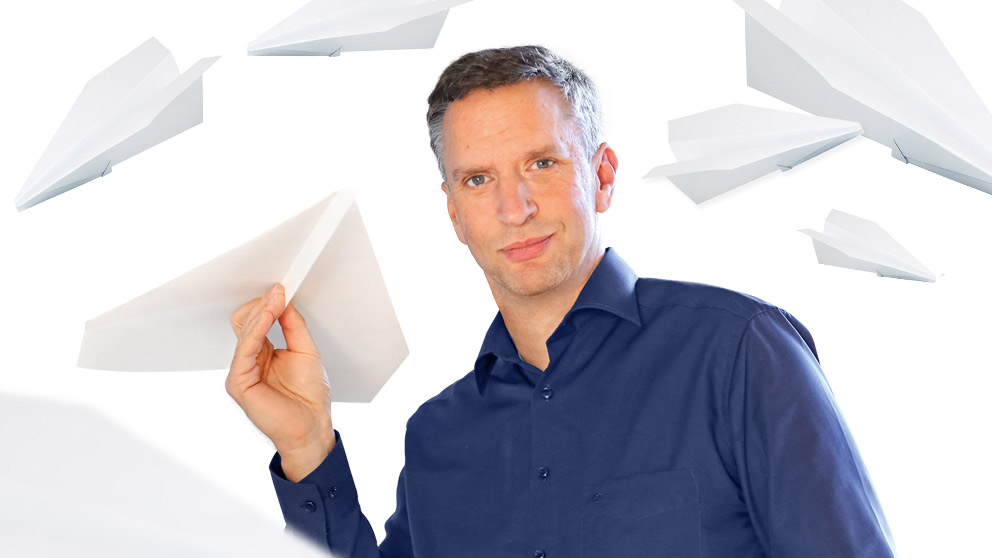Jump to the content
- {{#headlines}}
- {{title}} {{/headlines}}

I’m the head of the Physics, Engineering and Mathematics Division in the Selection Department. We process the applications and nominations in these disciplines so that the selection committees can make their decisions. This involves getting independent reviews from researchers in closely-related fields, for instance, and maintaining contact with hosts, committee members and reviewers. It is really important to speak the same language and share a degree of specialist knowledge.
In my own case, this is not immediately apparent: by training I’m actually a chemist and was a Humboldtian myself in the 1990s when I had a Feodor Lynen Fellowship in the United States. But there are many intersections between mathematics, physics and engineering in my personal experience. For example, I’ve been flying gliders since I was 17. For me, it was a short step from flying to the science behind it – not least because I always enjoy getting my mind around any new technical fields I encounter. When you’re flying a glider, you only make progress when you glide. In the process you lose altitude, which means you have to find thermals to climb up again and glide down once more. Modern gliders that can cover 700 or 1,000 kilometres have extremely high glide performance. But you can only get that far if you ensure the air resistance is as low as possible – so you soon have to consider scientific issues like fluid dynamics, polymer physics or, quite simply, mechanics.
I observe this pattern in myself in other areas of my life, as well: as an amateur radio operator I have learnt a great deal about electrical engineering and communications technology. I also ride and restore vintage racing bikes and have consequently immersed myself in mechanics and materials research. So, I suppose you could say that my work at the Foundation and my leisure activities complement each other pretty ideally.
